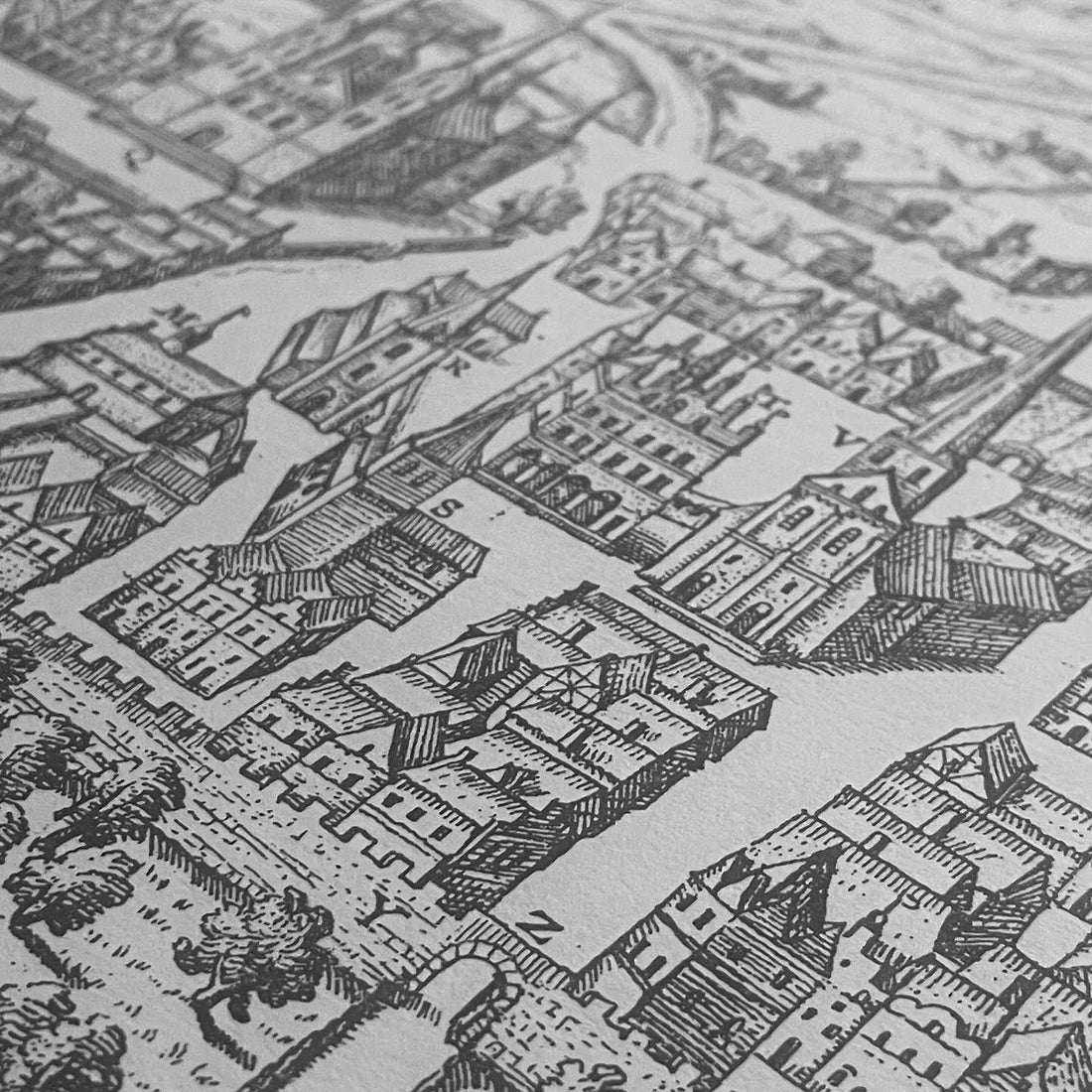
What distinguishes a digital print from our reproductions?
Can there really be that much difference between a digital print and our reproductions? After all, it's just a black and white print of an existing motif?
Yes – that's a question you can reasonably ask yourself. But there's a big difference. So big a difference that you can actually see it with the naked eye.
The first thing you notice is the paper itself. The paper for our prints was chosen with great care, by Robert based on its natural properties. This means that the color tone of the paper, its structure and ability to bind the ink or watercolor, in the case of a hand-colored print, are central to how the image is experienced when you look at it. The paper adds a warmth, you could say. And considering how much of the print the paper shines through, you can still say that it is a large part of how the print is experienced when it hangs on the wall.
This can be compared to a digital print based on a scanned image of an original, where the paper may have yellowed. This results in a yellowed background color on the paper, or in the worst case, a uniform gray color, if the image was scanned in black and white.
Our prints have no "background color", but the color and texture of the paper stand on their own. 
The reason we have not been given any background is due to how Robert carefully restored his works before they were printed. A task he carried out with the utmost care and diligence. The methods could differ, but he often worked by making a photographic copy of an original, and then meticulously masking the film that then formed the basis of the printing plate itself. In this way, he removed tears, fold marks, holes or bleeding from the back of the print. Something that was quite common on old maps.
This means that our maps are free from unwanted artifacts. Furthermore, they have been photographed, rather than scanned, which means you can be absolutely sure that there are no digital artifacts, where an original has been moved during scanning, or where a file has become corrupt.
Below you can see an example of what a digital print from a scan might look like. This particular map I ordered online and does not represent the quality of our

In the image above you can see a couple of artifacts. First, there is bleed-through from the back of the print. This is most evident at the top of the map. But there are some other flaws that stand out more. In the middle of the map you can see a shadow running vertically through the image. This is where the original map was folded and it is therefore a crease that could not be properly smoothed out before scanning. Something else that is interesting is the emblem at the top of the map, in the middle. Part of the emblem is missing there, probably because there was some kind of shift in the scan. In addition, many of the scanned images are taken from the internet and have too low a resolution to give a satisfactory result.
Now this is just one such reproduction and there are of course other maps that have been scanned better. But there are often reproductions where tears, holes and other things remain and then become part of the image. This can of course be decorative, but is a completely different type of product than what we sell.
So in summary, a print from us is carefully restored, by hand and with a quality and finish that is beyond the ordinary. You can be sure that our prints are free from digital artifacts such as pixelated images or misscans and that the paper choice is always something beyond the ordinary. With us you don't get a poster on a coated paper - with us you only find high-quality reproductions from a completely unique collection.
